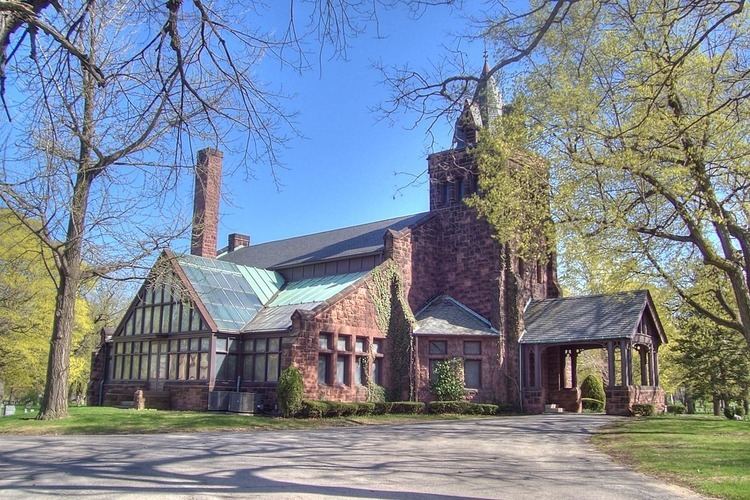Architectural style Gothic Area 80 ha Phone +1 414-645-2632 | NRHP Reference # 80000166 Year built 1850 Added to NRHP 3 November 1980 | |
 | ||
Location 2405 Forest Home Ave., Milwaukee, Wisconsin Architect Lapham, Increase A.; Multiple Address 2405 W Forest Home Ave, Milwaukee, WI 53215, USA Similar Deacon West Octagon, Whitnall Park, Wood National Cemetery, St Paul's Episcopal Church, Pabst Mansion | ||
Forest home cemetery tells stories of old milwaukee s rich famous
Forest Home Cemetery located in the Lincoln Village neighborhood of Milwaukee, Wisconsin is the final resting place of many of the city's famed beer barons, politicians and social elite. Both the cemetery and its Landmark Chapel are listed on the National Register of Historic Places and were declared a Milwaukee Landmark in 1973.
Contents
- Forest home cemetery tells stories of old milwaukee s rich famous
- Milwaukee s forest home cemetery program
- History
- Notable interments
- References
The cemetery is run by a non-profit organization held in public trust. Profits from each sale are reinvested to insure continual care of the buildings and land. Its Victorian landscape contains over 300 species of trees, along with many ornate statues, crypts and monuments.
Milwaukee s forest home cemetery program
History
A committee appointed by members of St. Paul's Episcopal Church in 1847 established Forest Home Cemetery on what would later become Milwaukee's south side. When the land was selected it was located nearly two miles outside of the city limits along the newly built Janesville Plank Road (now Forest Home Avenue), in an area believed to be far enough from urban development to remain rural. The 72 acres (290,000 m2) that were purchased in 1850 quickly grew to nearly 200 acres (0.81 km2) by the start of the 20th century. Orville Cadwell was the first burial on August 5, 1850 but was soon joined by others due to an outbreak of cholera in the city.
This location was dotted by Paleo Indian burial mounds and intersected a large collection of effigy mounds known to settlers as the Indian Fields. It contained over sixty earthworks which were catalogued by pioneer scientist Increase A. Lapham, including a rare intaglio of a panther, none of which remains today. An Indian village populated the corner near what is now Lincoln Avenue that grew corn on the hills. They most likely chose this location due to its proximity to the Kinnickinnic River.
Construction of the Gothic style Landmark Chapel started in 1890 and took two years to complete. It was designed by architects George Ferry & Alfred Clas and built using Lake Superior Sandstone, a dark red sandstone found near the Apostle Islands in Lake Superior. A leaded glass conservatory containing decades-old tropical plants extends from the north and south sides of the nave.
Modern improvements within Forest Home Cemetery include two large mausoleums. The Halls of History is an indoor temperature controlled mausoleum and community center. Along with the columbarium and crypts it houses, the center contains a number of permanent and changing exhibits that educate visitors about the history of Milwaukee and over 100 of its people. It is open for walk-ins during office hours. Adjacent to this is a large terraced outdoor mausoleum called Chapel Gardens. It contains above ground burials in porticos set by ornate colonnades, statues, and rose gardens.
Notable interments
Forest Home Cemetery is home to 28 Milwaukee mayors, seven Wisconsin governors, noted industrialists and over 110,000 burials. The Newhall House Monument is a mass grave for 64 people of the Newhall House fire of 1883, in which 71 individuals (43 unidentified) died.
